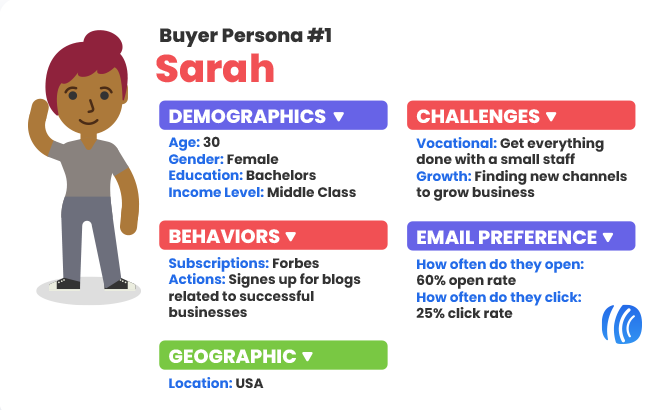Understanding Your Audience: How to Create Detailed Buyer Personas
In the world of digital marketing, content is king but relevance is everything. No matter how great your copy or campaign is, it won’t convert if it’s not speaking to the right people. That’s where buyer personas come in.
Creating detailed buyer personas helps you understand your audience on a deeper level so you can deliver messaging that resonates, builds trust, and drives action.
Whether you’re launching a product, writing a blog post, or planning an ad campaign, this guide will show you how to create buyer personas that work.
What Is a Buyer Persona?
A buyer persona is a semi-fictional profile that represents your ideal customer based on real data, behaviors, goals, and demographics. Think of it as a detailed character sketch of someone who might buy from you.
Example:
Name: “Working Mom Mia”
Age: 34
Job: HR Manager
Goals: Save time, manage home and work effectively
Challenges: Overwhelmed, tight schedule, needs smart solutions
Preferred channels: Instagram, Pinterest, Email newsletters
Having this clarity helps tailor your message for Mia, not just “any working mom.”
Why Buyer Personas Matter
-
✅ Better messaging: Speak directly to your customer’s pain points and desires.
-
✅ Smarter targeting: Choose the right channels, timing, and tone.
-
✅ Efficient marketing spend: Avoid wasting resources on uninterested audiences.
-
✅ Stronger product-market fit: Develop offerings your ideal customers actually want.
Step-by-Step: How to Create Detailed Buyer Personas
Step 1: Gather Real Data
Don’t just guess—build personas from real insights.
Sources of data:
-
Website analytics (Google Analytics, Hotjar)
-
Social media insights (Instagram, Facebook, LinkedIn)
-
Email open/click data
-
Surveys and feedback forms
-
Customer interviews
-
Sales team insights
Look for:
-
Age, gender, location
-
Occupation and income level
-
Devices and platforms used
-
Top content or product interests
-
Conversion paths and pain points
Step 2: Identify Common Patterns
Once you collect the data, group your audience into segments based on shared characteristics.
Example segments:
-
First-time visitors vs. returning customers
-
B2B buyers vs. solo entrepreneurs
-
Budget-conscious users vs. premium shoppers
Step 3: Build Persona Profiles
Use your insights to build 2–5 key personas. Each should include:
-
Name & Title: Give them a relatable name (e.g., “Budget Ben,” “Startup Sarah”)
-
Demographics: Age, location, gender, education, job title, income
-
Goals & Values: What motivates them? What are they trying to achieve?
-
Challenges: What’s holding them back? What keeps them up at night?
-
Preferred Platforms: Where do they spend their time online?
-
Content Preferences: Videos? Blogs? Emails? Long-form guides?
-
Buying Behavior: Do they compare before buying? Are they impulsive?
-
Quote (Optional): A sentence that captures how they think or feel
Step 4: Apply Your Personas Across Marketing
Now that you have your personas, use them to inform your entire marketing strategy:
| Marketing Element | How to Use Buyer Personas |
|---|---|
| Content creation | Choose blog topics, email angles, and social posts based on each persona’s needs. |
| Ad targeting | Use persona demographics and behavior for laser-focused Facebook or Google ads. |
| Website UX | Design landing pages that appeal to different personas. |
| Email campaigns | Segment your list and personalize your messaging. |
| Product development | Build features or services based on the most pressing challenges. |
Free Template: Buyer Persona Worksheet
Want to build your own personas? Use this free, fill-in-the-blank worksheet to get started.
[Download the Buyer Persona Template – PDF/Google Docs]
✅ Final Thoughts: Understanding Your Audience
The better you understand your audience, the better your marketing will perform. Buyer personas help take the guesswork out of strategy and let you connect with people not just profiles.
Start small. Build one or two personas using real data, then expand as you grow. Your ROI, engagement, and conversions will thank you.


